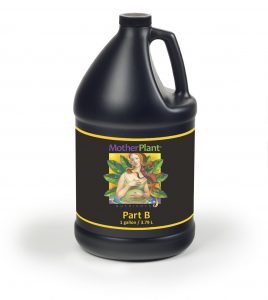Introducing MotherPlant® – Mother Plant Care and Plant Nutrition
A good mother plant fertilizer should provide enough Nitrogen to support a healthy root to shoot ratio, but not so much Nitrogen that the plants has to burn up most of its stored sugars just to assimilate the nitrates.


What Is A Mother Plant?
Mother plants are stock plants specifically raised to provide cuttings for starting new plants. The cuttings, also known as clones, are genetically identical to the mother plant, and if grown in a controlled environment will develop into daughter plants with the same superior characteristics as the mother plant. Since cuttings take time to develop roots, the clones must rely on stored water and carbohydrates in the stems and leaves to provide the energy necessary to develop vigorous new roots. Therefore, plant nutrition for the mother plant is critical to the rooting and recovery time of the tender clones.
Plant Nutrition Needs of Mother Plants
The plant nutrition requirements of mother plants are significantly different from those of production plants raised for optimal yields. Mother plants require a balanced nutrition specifically formulated to slow down excessive vegetative growth and increase the carbon to nitrogen ratio in the shoots. If a mother plant is fertilized with too much nitrogen, it will grow quickly, but it will produce soft tissues with poor carbohydrate reserves. About 25 to 30% of a plant’s energy is used to change nitrates into an organic form of nitrogen used for vegetative growth. So an over abundance of nitrates will deplete the sugars in the shoots and leaves, reducing the amount of fuel available for new root growth.
A good mother plant fertilizer must also be formulated to strengthen the plant’s cell walls and improve its water-holding capacity and stress tolerance. Excess nitrogen fertilization, as found in many plant nutrition formulas, produce large plant cells with thin cell walls. Cuttings taken from the new growth of overly-vegetative plants tend to be weaker and more susceptible to wilting and fungal infection. Again, reducing the amount of nitrates in the mother plant fertilizer to the low to medium range will be helpful, but the ideal mother plant fertilizer should also be formulated to stimulate the uptake of calcium. Calcium is taken up through the roots and transported to the new growth, where it forms the calcium pectate “glue” that bonds the cell walls together. A calcium-rich mother plant with stronger cell walls can take up water and nutrients more efficiently, allowing more sugars and nutrients to be stored for future use.
